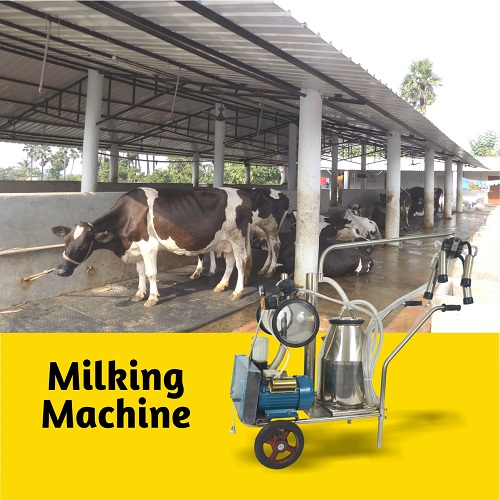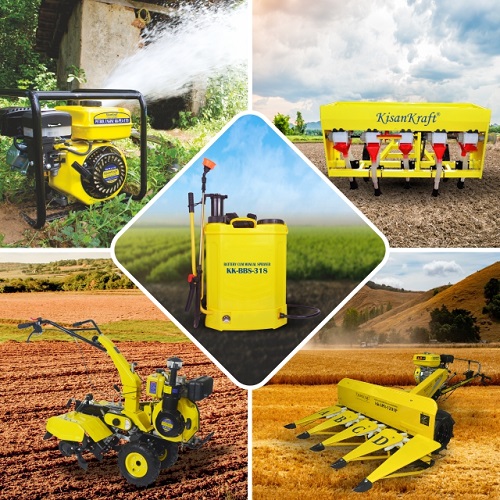Sustainable solutions to impact of land degradation and drought on Indian GDP
During the 2014- 15 fiscal, India lost more than 2% of its GDP (approximately Rs. 3 lakh crores)as a result of increased Desertification, Land Degradation, and Drought (DLDD). Land degradation negatively impacts agricultural productivity due to a decline in land quality on site where degradation occurs (e.g. erosion) and off-site where sediments are deposited. Land degradation results from a mismatch between land quality and land use. Desertification, the process of fertile land becoming a desert, is majorly caused by deforestation, unscientific practices in Agriculture and improper management of drought. Similarly, Drought itself also affects yield significantly.
The impact of Land Degradation and Drought can be solved by following certain agricultural management practices. As DLDD reduces agricultural productivity, the impact is not only economic, but it affects food security as well. Marginal and poor farmers are affected more by these processes.
Deforestation Control
Deforestation is a process of clearing of forest land for non-forest use. The negative effect of this can be reduced either by limiting the extent of deforestation per year and increasing the rate of reforestation as well as the afforestation.
Aerobic Rice
Aerobic Rice is one of the major solutions to counter the effects of drought and land degradation and helps to maintain food security. Aerobic rice is a method of rice cultivation that requires 50-60% less water than traditional wetland rice. There is no need for standing water, nursery bed preparation, and transplantation. Aerobic rice can perform better under drought-hit conditions and produce a normal yield, which in turn helps in sustainable food production. Moreover, Aerobic rice varieties are deep-rooted and hence, can protect the soil from erosion. Thus, taking care of drought and land degradation to a certain extent. While cultivating other crops, available drought-resistant varieties must be used to combat drought. Practices like seed hardening before sowing enhances plants’ inherent capacity to withstand moisture limiting conditions.
Crop Practices
Practices such as crop rotation, intercropping and mixed cropping with crops like pulses improve soil health and nutrition which improves yield. These management practices, by improving soil health as well as by maintaining soil physical, chemical, and biological properties, also reduces the chances of land degradation. Over-utilization of land leads to land degradation. These farming practices should be involved in such a way that land is not overused. Along with cultivating the crops with deeper roots, growing cover crops such as vetch, rye and clover are excellent measures for controlling the soil erosion. Maintaining a proper population of crop plants would also reduce the chances of soil erosion.
Limiting fertilizer use
India consumes 171kg of fertilizer per hectare of arable land. This is significantly higher than most of the countries with higher productivity. The application of excess fertilizer is one of the reasons for land degradation. The judicious application of fertilizers at the right time, in the right quantity and in the right form would reduce land degradation.
Soil Health Practices
To enhance soil health and nutrition, green manuring must be practiced. The incorporation of green tissues into the soil would increase soil nutrient content and enhance soil microbial population. This practice not only increases nutrient content but make these nutrients available to plants. This would also increase the yield and would limit the loss of nutrients which in turn limits land degradation. Maintaining soil carbon content is an important aspect of soil management. Application of sufficient quantity of composts, farmyard manures are crucial for maintaining the soil health and conserving it.
Water Conservation
Irrigation is another aspect of farming which must be considered while countering soil degradation and drought. To counter drought, water-saving irrigation technologies like drip irrigation and sub-surface irrigation should be followed wherever possible. Rainfall should be effectively used by adjusting the sowing date accordingly, constructing farm ponds to harvest rainwater, recharging borewells using rainwater, etc. Over-dependence on monsoon should be reduced. Moisture conservation practices like mulching must be practiced. These technologies, in combination with precision agriculture, would not only increase productivity but also will conserve the soil. Excess irrigation, especially in the form of surface irrigation, would enhance soil erosion and hence, should be avoided.
Following package of practices recommended for the region like the selection of crops, sowing time, sowing method, spacing, proper water and weed management practices, etc., would reduce the loss of soil and its degradation. Selecting drought-resistant crops and varieties, soil moisture conservation practices, better utilization of rainfall, etc., would reduce the negative impact of drought. Reduced land degradation, preparedness to counter drought, reduced deforestation, and increased reforestation, as well as afforestation, would limit the loss in GDP that India is facing.
This article was written by Mr. Sumanth Holla and Ms. Sowjanya. Both are Ph.D. Scholars at UAS (Bangalore) and member of the R&D team at KisanKraft Limited.
References
1.https://timesofindia.indiatimes.com/home/environment/pollution/desertification-land-degradation-drought-cost-india-2-54-of-its-gdp-study/articleshow/63944875.cms
2. https://www.kisankraft.com/about-aerobic-rice/
3.https://web.archive.org/web/20120120202018/http://soils.usda.gov/use/worldsoils/papers/land-degradation-overview.html
4. https://data.worldbank.org/indicator/AG.CON.FERT.ZS




